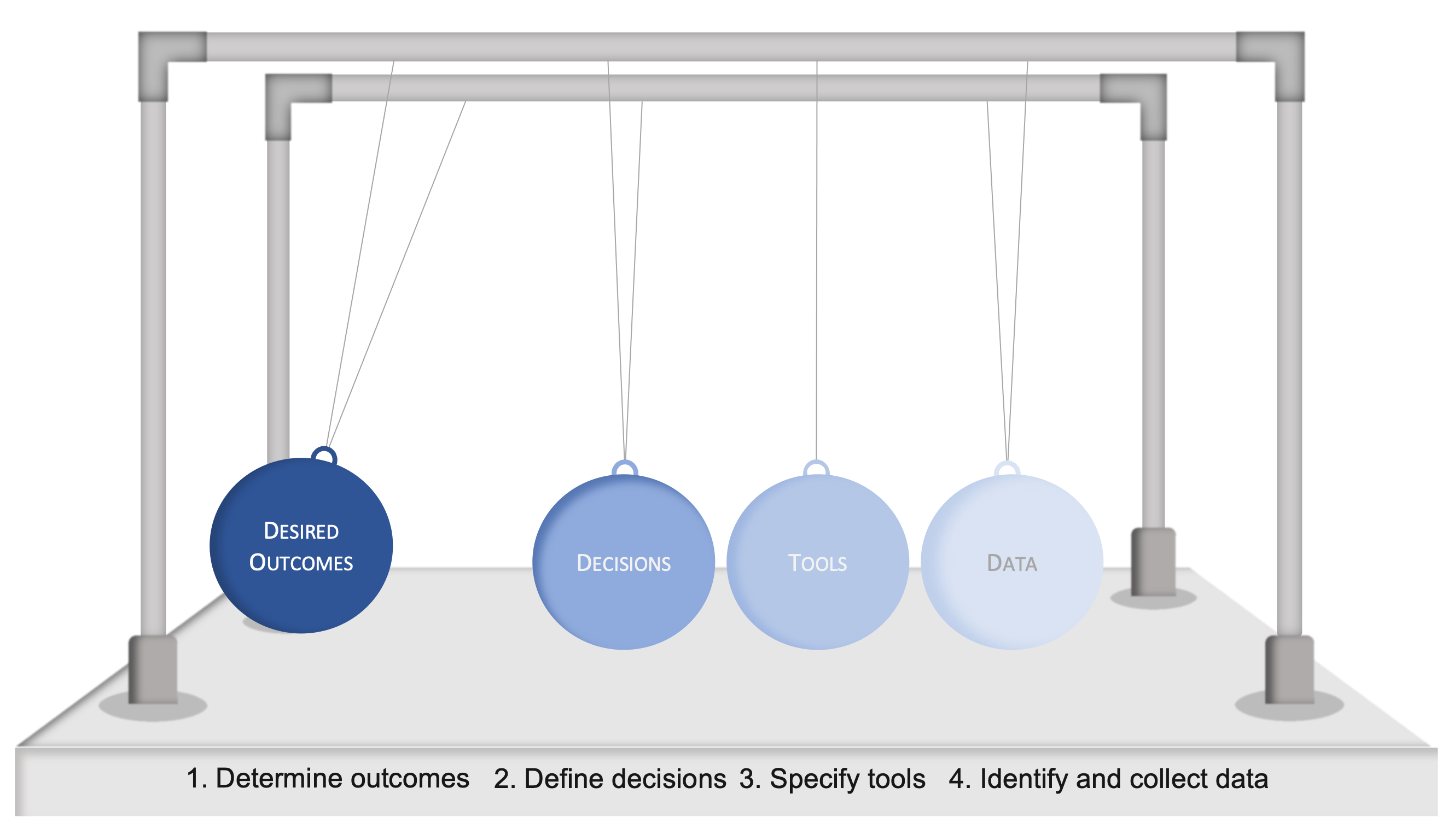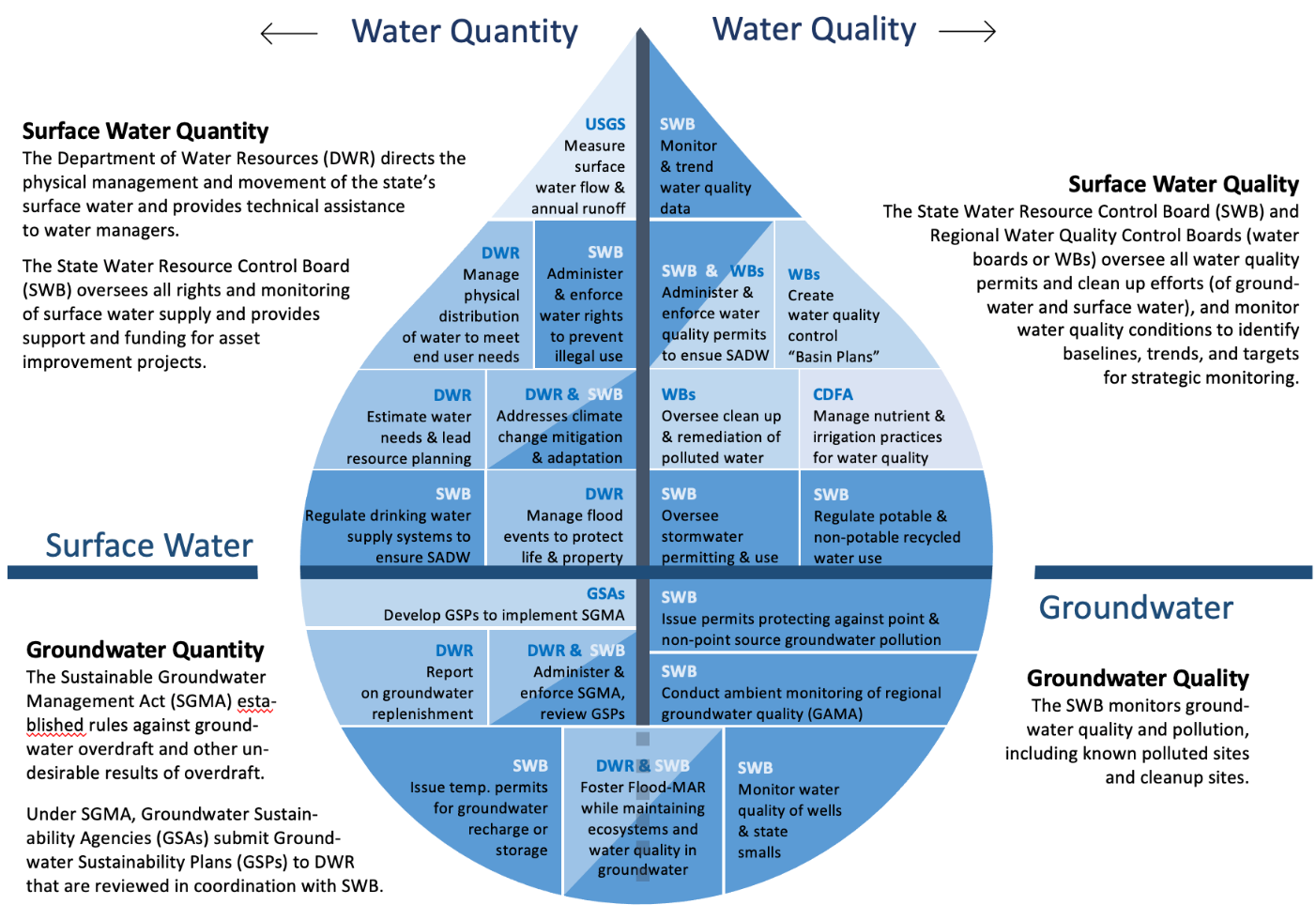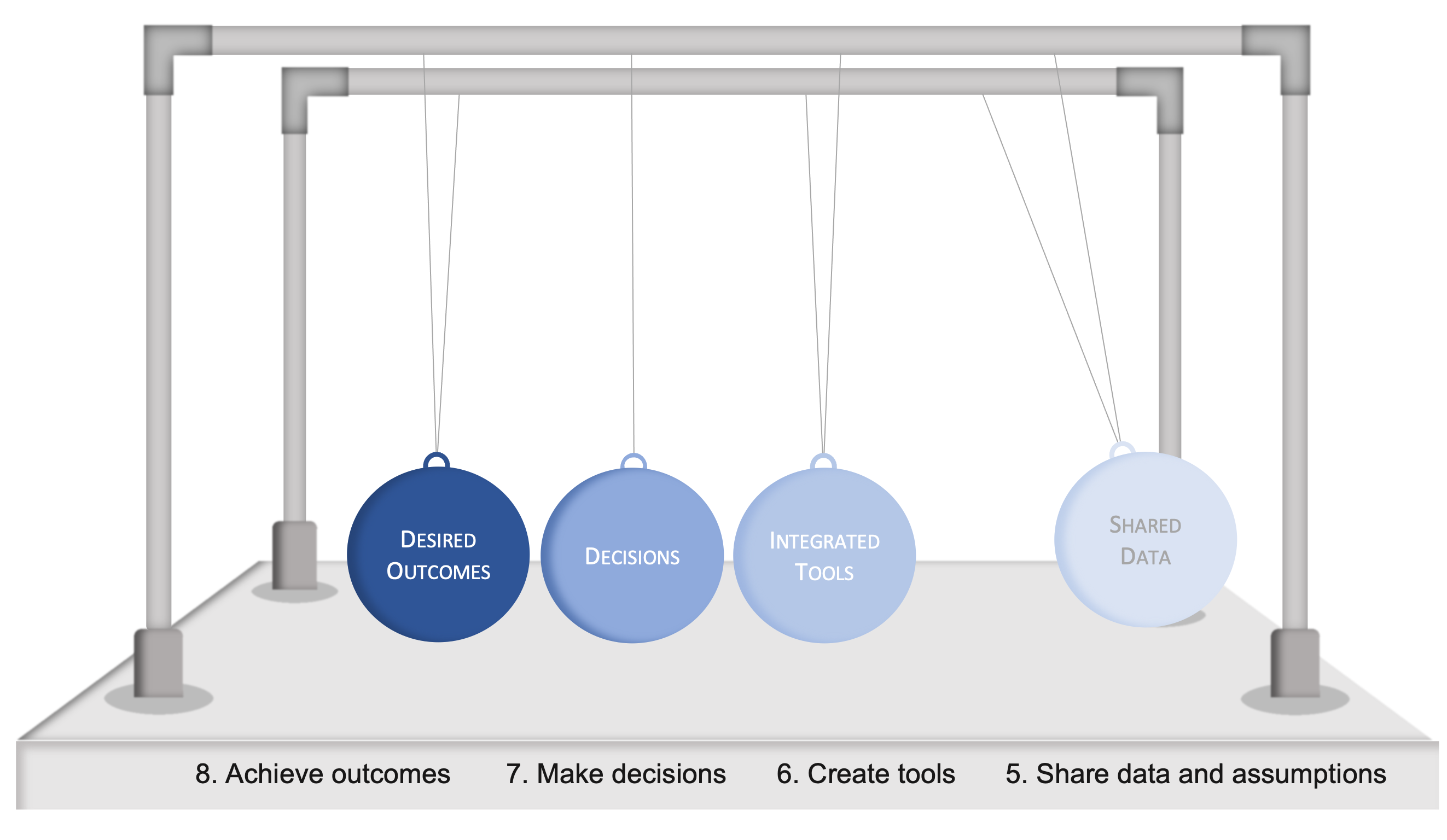
The Challenge of the Dry Years
Achieving drought resilience depends on better water data and cross-agency coordination
By: Clare Keating, Earth Genome
October 2021
“I have spoken of the rich years when the rainfall was plentiful. But there were dry years too, and they put a terror on the valley. The water came in a thirty-year cycle…. And it never failed that during the dry years the people forgot about the rich years, and during the wet years they lost all memory of the dry years. It was always that way.” – John Steinbeck, East of Eden
Nearly 70 years after Steinbeck wrote East of Eden, his words still ring true. With satellite images showing receding reservoirs contoured with pale bathtub rings of dry earth, drab mountain peaks where white snowpack melted away months ago, and so much smoke, the dry years have again put a terror across California. For decades, we’ve gotten away with business as usual, preparing for the future as though it would always be the way of thirty-year cycles.
Steinbeck’s quote is well-worn, from blog posts to Congressional records. Evoking Steinbeck, drought after drought, speaks to our collective inability to act and implement lasting solutions in water-volatile California. Nonetheless, and although we’re seemingly at the 11th hour, we face a unique opportunity where, in California, there is both the will and the resources to make meaningful change towards greater drought resilience.
The solution rests on a unified approach to sharing better water data across California.
Water Outcomes: Solving for better water data
Better water data are essential to rapid drought response and resilience. But the tendency to collect too much data, data for data’s sake and without a stated use, is a common obstacle. Better data means collecting the right data, defined by strategic water outcomes. From determining desired outcomes, to defining decisions, to specifying tools, a pendulum-like process, akin to Newton’s cradle, can be used to improve water data.

Figure 1 The version of Newton’s cradle for California water data seemingly defies physics by losing inertia at pendulum four after better data is identified and collected. © The Earth Genome 2021
Identifying the right data follows a series of pendulums across four steps (Fig. 1). For example, in the case of drought resilience in California, a desired outcome (pendulum 1) is that all Californians have access to safe and affordable water. In many places, this depends on halting the decline of groundwater. Because managed groundwater recharge is a key strategy to reduce groundwater depletion, decisions (p2) center around finding the best recharge sites. With limited water available for recharge, sites that offer multiple benefits are preferred. Groundwater recharge efforts have distinct spatial-temporal aspects which warrant a GIS-based tool (p3) that helps prioritize site selection for individual groundwater sustainability agencies’ recharge projects. Tool transparency is needed; trust is a pivotal element to successful drought resilience efforts. Tools not only allow for the effective communication of information internally, to partners, local government, and the public during droughts, but also to transparently balance competing needs and to make drought allocation decisions less contentious and more efficient.
Good drought data and tools are in use today. However, fundamental data for drought resilience, that is, supply and demand of surface and groundwater, is missing. Today, decision-makers lack meaningful historical and current water availability data and analysis while future projections, without climate change and intensity modeling, are rudimentary. Equally, the dearth of use data, ideally in the form of continual, up-to-date surface water diversion and groundwater pumping volumes, exasperates latent distrust over allocation decisions.
In the rich years, when rainfall is plentiful, and even in previous dry years, there wasn’t a need to track the fate of every molecule. Estimations and perfunctory data collection were acceptable in Steinbeck’s day of thirty-year cycles, just as a simple annual checkup suffices for monitoring a healthy person. But navigating a mega-drought is equivalent to being in intensive care where real-time vitals inform lifesaving decisions. Likewise, in a drought, near real-time data on hydrological vitals is critical. For drought resiliency, the outcomes-based framework points to the need of real-time data on both surface water and groundwater supply and demand in California.
Water Data: Achieving better outcomes
From the starting point of desired outcomes, the path to identifying and collecting the right data for better decisions can be reached. However, in complex systems of water governance, like that of California, better data does not necessarily translate back through the pendulums. The inertia of pursuing desired outcomes is interrupted by the piecemeal nature of water management in California.
In California, the jurisdiction of water depends on the physical location of a water molecule. Jurisdiction over a water molecule is divided across multiple agencies, depending on where it is in the hydrologic cycle and the management situation. This fragmentation creates tension when determining how to mitigate, who should react, and at what level of governance action should occur. These challenges are exacerbated as the answer can change given the duration, severity, or extent of the drought. Fragmentation also creates a system where a decision about one part of a molecule does not consider the other, that is, decisions about surface water are often made without consideration of groundwater, and vice versa.

Figure 2 Representation of the shared jurisdiction of a water molecule as it moves through the water cycle from surface to groundwater and managed for quality or quantity. Not all agencies are represented. Shared blocks do not imply shared data or resources. © The Earth Genome 2021
In the case of Newton’s cradle for water data, physics itself is interrupted by a lack of coordination. To swing the pendulum of better data back to achieving outcomes requires an integrated and shared data infrastructure that consolidates data and assumptions, and associated tools (Fig. 3). What’s needed is action by an outside force that allows decision-makers to see a fuller picture of potential outcomes and shared benefits. To ensure access to safe and affordable water during drought, spatial and temporal data specific to the exact location of at-risk wells, as well as an understanding of the nature of the risk, whether it be quality or quantity, is needed. Indeed, data already exists and innovative, public access tools, such as the Aquifer Risk Map, DWR Drought and Water Shortage Risk Tool, CWC drinking water tool, and SAGBI suitability index, provide needed insights for their relevant use cases. Unifying these resources and efforts would create a system greater than the sum of its parts.

Figure 3 Only with a shared data approach does the Law of Inertia apply to Newton’s cradle for California water data, creating an acceleration of drought resilience. © The Earth Genome 2021
The task of drought resiliency in California is enormous; the heavier an object is, the more force it takes to start it moving. But by enacting a collaborative approach to improve drought data, tools, decision-making and resulting outcomes, perhaps Steinbeck’s quote will fade into the literary archives. Perhaps this is the turning point where we finally take meaningful action on the great drought challenge. Perhaps we will start seeing quotes that instead speak to our ability to act on, rather than ignore, the escalating crisis of drought.
“I am sure we are up for it: we are Californians and there is one thing that we have shown again and again and that is our love of a good challenge.” – Obi Kaufman, The State of Water

Photo Credits
Header Photo: Markus Spiske, Unsplash
Footer Photo: Paul Czerwinski, Unsplash
